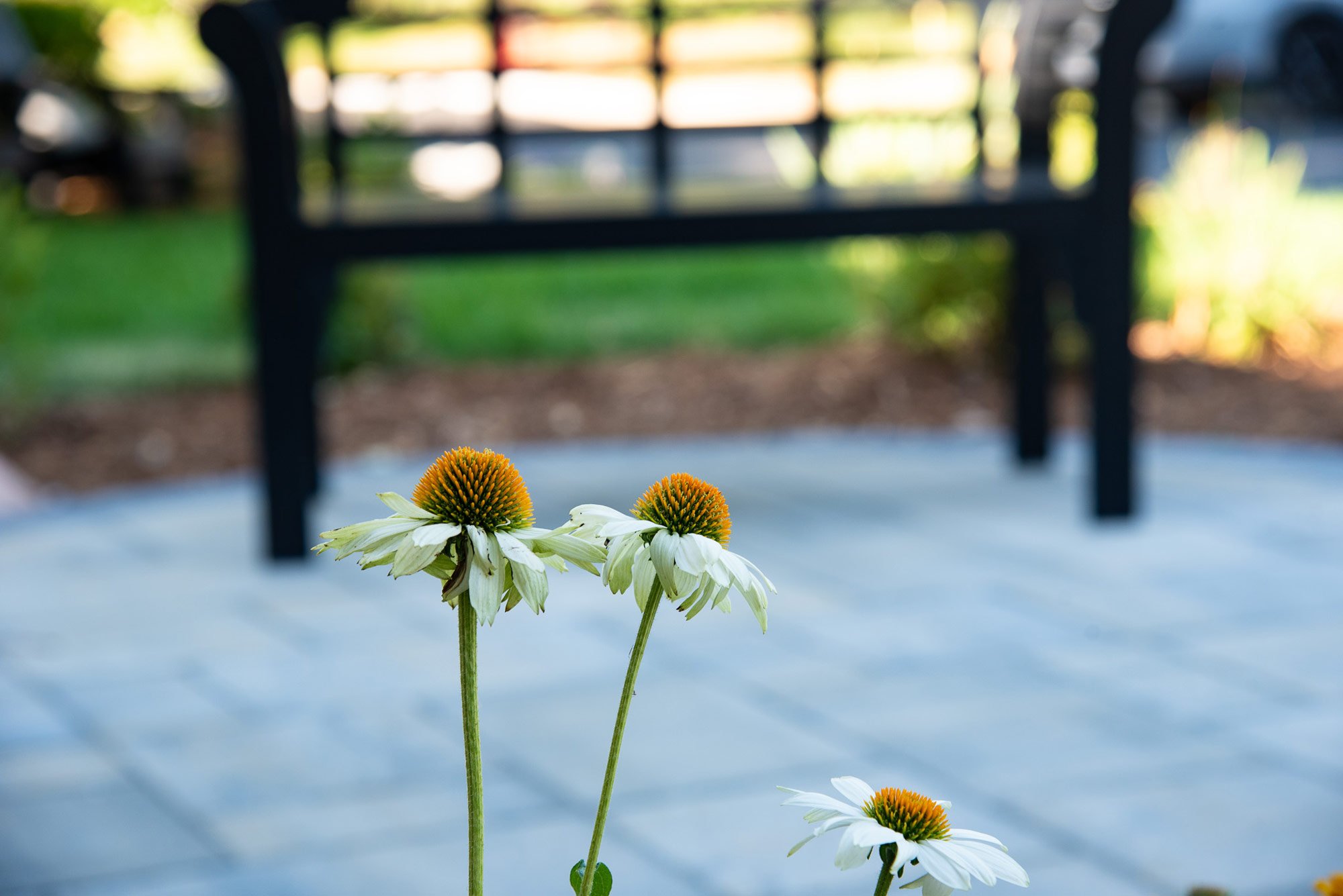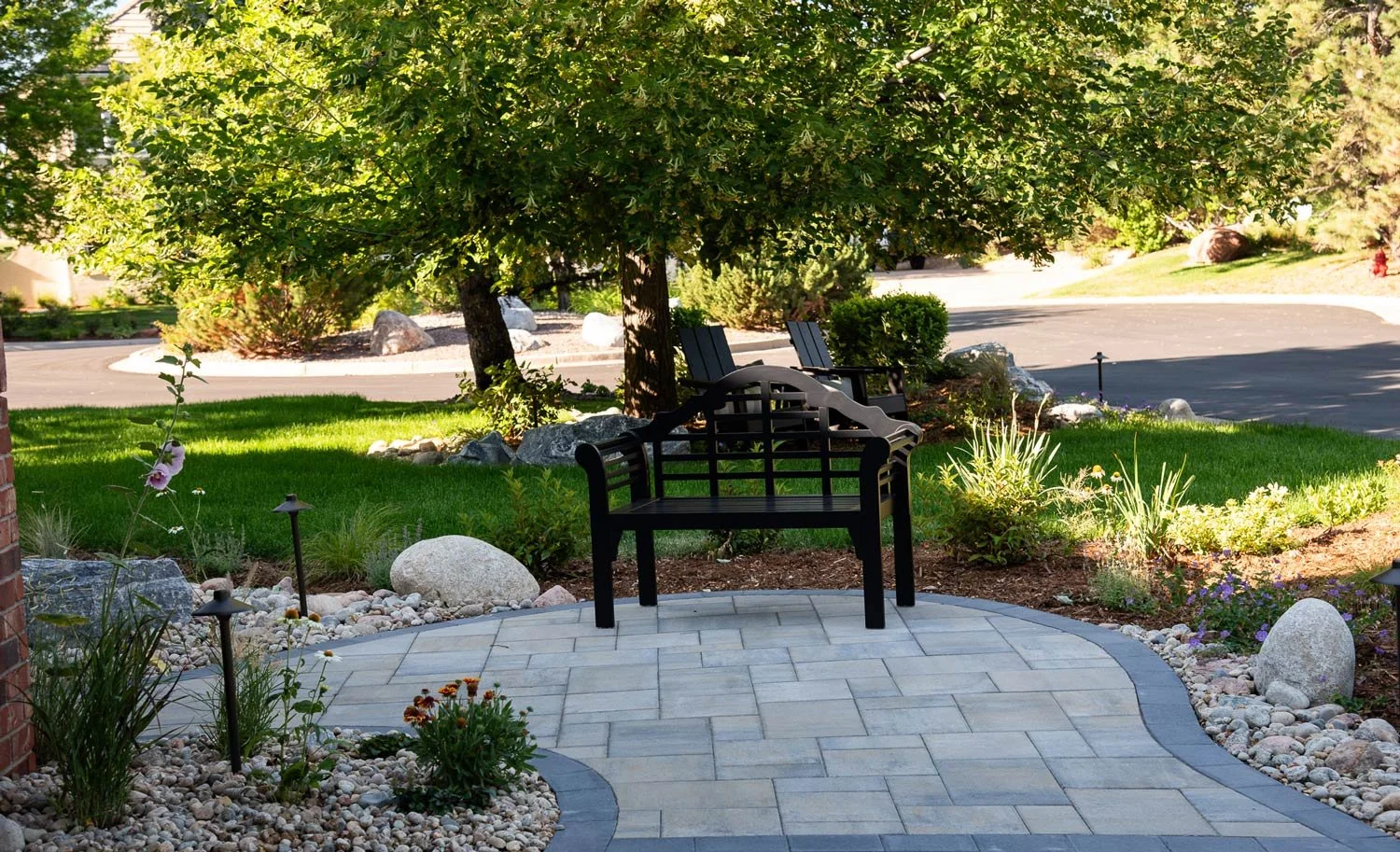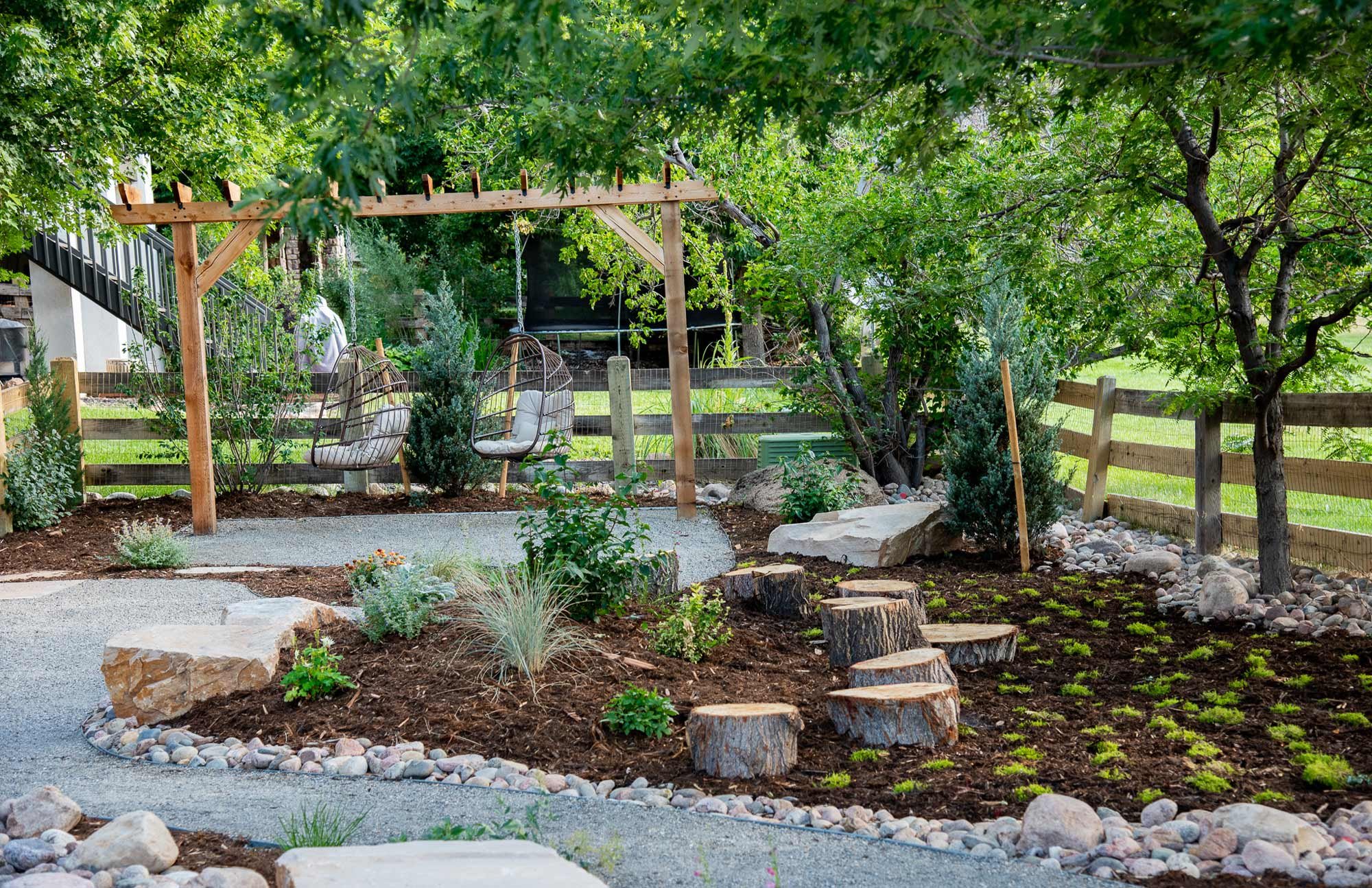
Boulder Landscape & Design
Frequently Asked Questions
About BLD, Our Offerings, Design Plans, and Project Scheduling
-
Boulder Landscape and Design (BLD) has been serving Boulder, Broomfield, Erie, Gunbarrel, Lafayette, Louisville, Longmont, Lyons, Niwot, and Superior since 1981.
-
There is no fee for that first appointment with the designer, but the initial consultation appointments are intended for the designer to learn more about you, your project, and talk about next steps. They will be asking a lot of questions about your project goals to evaluate if we are a fit for the type of work you want to do, and talk to you about what they envision for the design plan. At that point they will be able to provide you a price for the design plan, which is based on the scope of your project and how intricate it is and the size of space. They do not provide consulting services for a fee or hourly rate.
-
Design plans typically range from $1,000 to $5,000, depending on the size and complexity of your project. These fees cover the time and effort our designers dedicate to ensuring your project runs smoothly from start to finish.
We believe that starting with a detailed design plan helps address potential changes and adjustments upfront during the design phase, rather than during construction. This approach gives you a clear understanding of both the look and cost of your project before making any commitments. If you have a specific budget, our designers can work within it to create a plan that aligns with what’s feasible for your project.
With a design plan in place, we can offer highly accurate estimates since every detail is carefully considered. There are no hidden fees or unexpected surprises. We provide estimates only in conjunction with a design plan to ensure precision and clarity.
-
No, the design plan fee is separate from the construction costs. Once completed, the design plans are yours to keep and use however you choose. While we don’t start projects without a design plan, you're free to seek bids from other companies or even handle the work yourself if you prefer. Our goal is to offer flexibility while ensuring a solid plan is in place for any project.
-
Yes, as long as the design plan is thorough and provides all the necessary information we need in order to build an estimate from.
-
Of course! We just want to know that on the front end so we can design with your capabilities in mind and not include items like retaining walls or an outdoor kitchen that might be challenging for you to do on your own.
-
Our schedule is 100% based on a first come/first serve model. We don't prioritize or squeeze projects in based on size. Please know If you choose to move forward with us, we will extend the same courtesy and integrity to you and not put any projects ahead of yours. The only thing that affects our schedule and how quickly we move through projects is the weather.
-
Yes! We want your landscape to last a lifetime and are here to support you. All hardscape is guaranteed for a full year, and plants through the first winter as long as proper care and watering are confirmed, we will replace any struggling plant at no cost to you.
Choosing the Right Landscaper For Your Project and Pricing
-
Your home is probably one of your biggest investments and most valuable assets. The decision of who you hire should not be taken lightly and don’t choose a landscaper solely based on costs. You want your landscaping project to look great, maintain the structural integrity of the area, and last for years to come. Work should be done neatly, quickly, and cleanly, by people who know what they are doing.
You want the best price and level of quality possible. Most importantly, you want to work with someone who understands your needs and can provide a customized solution.
Unfortunately there is no barrier to entry in the landscape construction industry, anyone can call themselves a landscaper. So it is up to you, the consumer, to really do your research prior to hiring any contractor. It is important to read reviews, see pictures of their work, get referrals, and learn about the company you are considering hiring.
Here are a few things to consider when choosing the right landscape for your project.
Experience and Portfolio: A good landscaper will have a solid portfolio of past projects, showcasing their skills and variety. Be sure their portfolio pictures on their website are actually from their projects and not just stock imagery that they purchased! Ask to see examples of their work.
Reviews and Reputation: Look for online reviews and testimonials. Established landscapers should have a history of satisfied clients and a positive reputation in the community.
Design Plans: Established landscapers often start with a design plan that reflects your vision and project details, offering a structured approach to ensure quality and accuracy.
Provides Quality Assurance and Warranties: A good landscaper will stand behind their work and won’t hesitate to make any needed repairs.
Detailed Estimates and Contracts: A reputable landscaper will provide clear, detailed estimates and contracts that outline the scope of work, materials, timeline, and costs upfront.
Insurance: Reputable landscapers should be properly insured. This protects you in case of accidents or damages during the project. They want to protect your property and their people.
Communication: A good landscaper will communicate clearly and professionally, answer your questions, and address any concerns. Poor communication or evasive answers can be a red flag.
-
A successful landscaping project begins with a well-thought-out design plan. Our expert designers work closely with you to create a detailed roadmap, providing 3D renderings that allow you to visualize every detail before construction starts. This helps ensure that the final outcome matches your vision.
We prioritize clear communication and transparency throughout the process, making room for adjustments as needed before or during the project. This eliminates uncertainties, minimizes risks, and allows for accurate pricing and estimates.
Customer satisfaction is at the heart of what we do. Our estimates are all-inclusive, with no hidden fees. The price will only change if the project scope is modified. Don’t just take our word for it—check out testimonials from our happy clients to see how we've built strong relationships within the community.
-
We understand that sticking to a budget is important! Our designers will work closely with you to offer solutions and strategies for meeting your goals within your budget. Here are the main factors that can affect the cost of your landscaping project:
Size and Type of Plants and Trees: Larger, mature trees, such as those used for immediate privacy, tend to be more expensive than smaller, younger plants that need time to grow. Choosing smaller plants can help reduce costs, and with a little patience, your landscape will flourish beautifully in just a season or two.
Incorporating Hardscape Features: Elements like patios, retaining walls, fire pits, pergolas, or outdoor kitchens add value and beauty to your landscape, but they require skilled labor and significant preparation to ensure durability. This labor-intensive work can increase costs, but these features often become the highlights of a professionally designed landscape.
Size and Materials for Hardscaping: To reduce costs, you can minimize the size of your hardscape features or choose more budget-friendly materials. Our designers can suggest material options that still achieve your desired look without breaking the bank.
Accessibility of Your Yard: Easy access to your yard can lower labor costs. Projects requiring manual hauling of materials with wheelbarrows, instead of machinery, are more time-consuming and labor-intensive, which can increase expenses.
If your vision exceeds your current budget, our experienced designers can help phase the project over time to achieve your goals while maintaining a cohesive and harmonious design.
Types of Landscaping
-
There isn’t one that is better or worse, it comes down to your landscape project goals, desired style, and budget. When deciding between concrete and flagstone for a patio or walkway, there are pros and cons to both and many factors to consider. Let’s explore the characteristics of each so you are well informed.
Aesthetic Appeal: Flagstone is known for its natural and rustic look, as it is a type of sedimentary rock that is typically flat and irregularly shaped. It offers a unique and charming appearance, and comes in a multitude of earthy colors to really create dimension and a custom feel.
On the other hand, concrete provides a more uniform and contemporary appearance. It can be stamped, stained, or colored. Trying to match stained concrete to an existing structure or element can be challenging as the colors do vary and often fade with time.
Durability and Longevity: Both concrete and flagstone are durable materials, but flagstone is known for its exceptional durability. It can withstand heavy foot traffic, extreme weather conditions, and has a longer lifespan compared to concrete when properly installed and maintained.
Also… if you have any issues below where the flagstone patio or walkway is built (such as a tree root that has grown in size and now impacting the space, or a pipe coming from your house that has a leak or bursts, or if you live in a new-build home and the ground settles), flagstone can be pulled up quickly to address any issues and then re-laid to perfection.
Concrete does not offer that flexibility should an issue develop down the road. Concrete, when well-made and sealed, can also be long-lasting, but it may require occasional repairs over time.
Installation and Versatility: Concrete is relatively easier to install since it can be poured into any shape or size, allowing for more flexibility in patio design. It can be formed into various patterns, textures, and finishes.
Flagstone installation, on the other hand, requires more expertise, as the stones need to be carefully cut, laid and fitted together. However, flagstone offers versatility in terms of creating a naturalistic, irregular layout.
Cost: Concrete is generally more budget-friendly compared to flagstone. Flagstone is often more expensive due to its natural characteristics and the labor-intensive installation process. Concrete, particularly plain gray concrete, tends to be more affordable.
Maintenance: Both materials require some level of maintenance. Concrete may develop cracks, especially if the ground settles or shifts. Regular sealing of concrete is recommended to protect it from stains, moisture, and weathering. Flagstone requires occasional cleaning and re-leveling of the stones to maintain its appearance and prevent weed growth in the joints.
Climate Considerations: Flagstone is an excellent option in Colorado as our weather is fairly extreme with freeze-thaw cycles. Flagstone is less prone to cracking or damage from temperature changes, but the joints can show wear and tear more quickly which can be redone as needed. Removing snow from a flagstone patio or walkway can be more challenging than concrete due to its inconsistent texture and joints.
Concrete can also withstand various climates but is more prone to cracking in Colorado’s weather extremes. Concrete will also absorb a lot of heat during the summer months which can become uncomfortable to walk on. However, this can be mitigated by using light-colored concrete, adding shade structures, or putting down outdoor rugs.
Ultimately, the choice between concrete and flagstone for your patio depends on your preferences, budget, and desired aesthetic. Talk with one of our experienced landscape designers to discuss which option would be best for your landscape project.
-
Xeriscaping is a style of landscaping that reduces the amount of lawn and water used in yards, while also maintaining the integrity and beauty of the space by replacing the lawn with native and drought tolerant plants, mulch, rock, and boulders to create a colorful and inviting space to enjoy!
Xeriscapes on average reduce landscape water consumption by 40-60% compared to regular lawn landscapes. Unfortunately, to many homeowners’ xeriscaping equates to removing all the lawn and replacing it with a yard full of rock or gravel. When done correctly, xeriscaping produces greenspaces that require low amounts of water and maintenance but are creative and full of texture and dimension.



